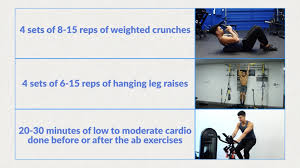Discover the truth about targeting belly fat. Can you really spot-reduce fat in specific areas? Learn what science says about belly fat reduction and effective strategies.
The quest to target belly fat is a common goal for many people striving for a leaner, healthier physique. Whether it’s for aesthetic reasons or overall health, the desire to shed fat specifically from the abdominal area is widespread. But can you really target belly fat? Is spot reduction a myth or a scientifically proven method? Let’s delve into what science says about spot reduction, why belly fat is stubborn, and the most effective ways to achieve a healthier midsection.
What Is Spot Reduction?
Spot reduction is the idea that you can lose fat from a specific area of your body by exercising that particular region. For example, performing countless crunches to reduce belly fat or doing leg raises to slim down thighs. While it sounds appealing, the scientific evidence surrounding spot reduction paints a different picture.
The Science Behind Spot Reduction
Multiple studies have investigated the concept of spot reduction. Most findings suggest that targeting fat loss in specific areas through localized exercises is not effective. Here are some key takeaways:
- Fat Loss Is Systemic:
- Fat is stored in adipose tissue throughout the body and used as energy when a calorie deficit occurs. The body doesn’t prioritize burning fat from the area being exercised; it draws from overall fat stores.
- Research Evidence:
- A 2013 study published in the Journal of Strength and Conditioning Research examined whether resistance training targeted at the non-dominant arm would lead to localized fat loss. Results showed no significant fat reduction in the trained arm compared to the rest of the body.
- Genetics and Hormones:
- Genetics and hormonal factors often dictate where fat is stored and how it’s lost, making it impossible to control fat loss in a specific region.
Why Is Belly Fat So Stubborn?
Belly fat can be particularly difficult to lose due to several factors:
1. Types of Belly Fat:
- Subcutaneous Fat: This is the fat stored just beneath the skin. It’s visible and often the main concern for those aiming to improve their appearance.
- Visceral Fat: This fat surrounds internal organs and poses greater health risks, such as heart disease and type 2 diabetes.
2. Hormonal Influence:
- Stress-induced cortisol can increase fat storage around the abdomen.
- Hormonal imbalances, such as insulin resistance, may also promote belly fat accumulation.
3. Evolutionary Factors:
- From an evolutionary standpoint, the body prioritizes fat storage in the abdominal area as an energy reserve, making it more challenging to shed.
Effective Strategies to Lose Belly Fat
While spot reduction isn’t effective, certain strategies can help reduce overall body fat, which will eventually include belly fat. Here’s how:
1. Create a Caloric Deficit
- Weight loss occurs when you burn more calories than you consume. Focus on a balanced diet and portion control to achieve this deficit.
2. Incorporate Strength Training
- Building muscle increases your resting metabolic rate, helping you burn more calories even at rest. Compound exercises, such as squats and deadlifts, engage multiple muscle groups and are highly effective.
3. Prioritize Cardio Workouts
- High-intensity interval training (HIIT) has been shown to be particularly effective for fat loss. A study published in the Journal of Obesity found that HIIT significantly reduced abdominal fat in participants.
4. Adopt a Healthy Diet
- Reduce consumption of refined carbs and added sugars.
- Focus on whole, nutrient-dense foods, such as vegetables, lean proteins, healthy fats, and whole grains.
5. Manage Stress
- Chronic stress leads to elevated cortisol levels, which can increase belly fat storage. Practices like mindfulness meditation, yoga, and adequate sleep can help.
6. Stay Consistent
- Fat loss takes time and requires a consistent approach to both diet and exercise.
Debunking Popular Myths About Belly Fat
Myth 1: Crunches Will Flatten Your Stomach
- While crunches strengthen your abdominal muscles, they won’t burn the fat covering them.
Myth 2: Fat-Burning Foods Target Belly Fat
- No specific food can target belly fat. However, a healthy diet supports overall fat loss.
Myth 3: You Can Out-Exercise a Bad Diet
- Exercise alone cannot compensate for a calorie surplus from unhealthy eating habits.
Frequently Asked Questions (FAQ)
1. Can I Target Belly Fat Through Exercise?
No, you can’t target belly fat specifically through exercise. Fat loss occurs systemically and is influenced by a caloric deficit.
2. What Are the Best Exercises to Reduce Belly Fat?
While no exercise targets belly fat directly, HIIT, strength training, and core exercises help improve overall fat loss and abdominal strength.
3. How Long Does It Take to Lose Belly Fat?
The timeline varies based on factors like diet, exercise consistency, and genetics. Sustainable fat loss is typically 1-2 pounds per week.
4. Is Belly Fat Dangerous?
Excess visceral fat increases the risk of health conditions like cardiovascular disease and type 2 diabetes.
5. Can Supplements Help Reduce Belly Fat?
Some supplements may support fat loss, but they’re not a substitute for a healthy diet and exercise.
The science is clear: spot reduction, including targeting belly fat, is a myth. However, by adopting a holistic approach that combines a healthy diet, regular exercise, and stress management, you can achieve overall fat loss and improve your health. Stay consistent, be patient, and focus on sustainable lifestyle changes rather than quick fixes. Remember, achieving a leaner midsection is not just about aesthetics; it’s about enhancing your overall well-being.